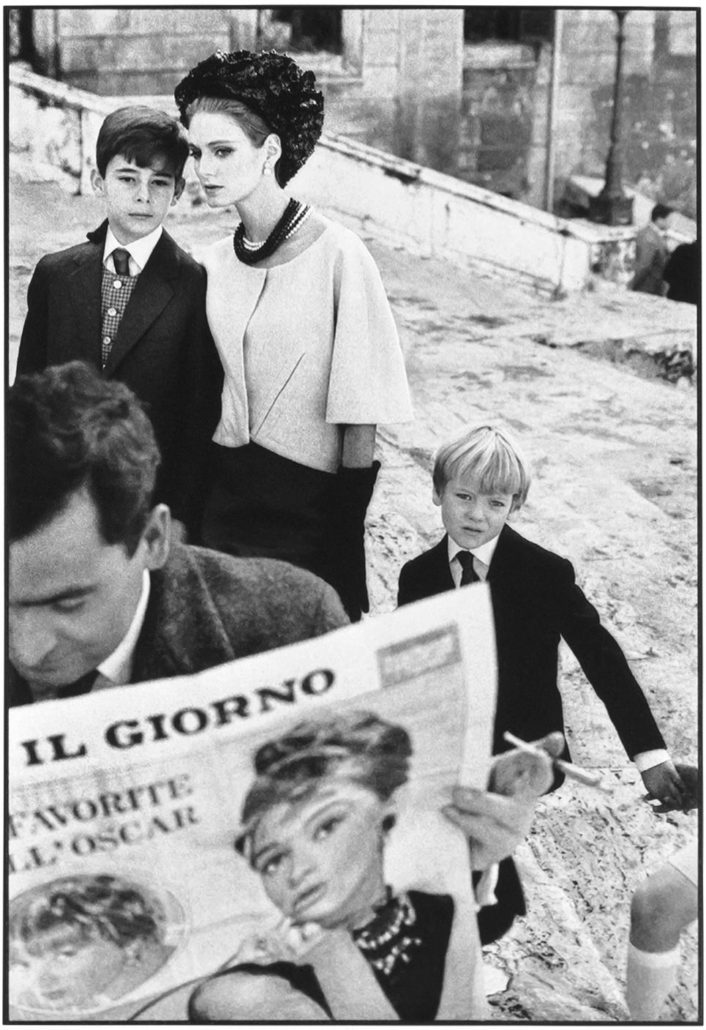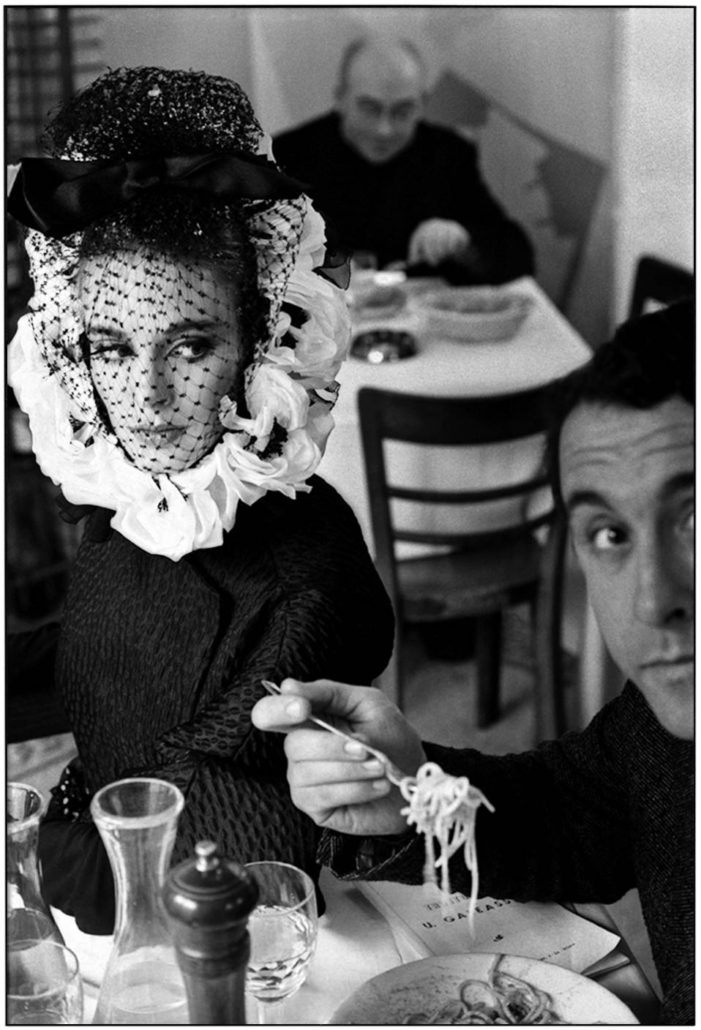Frank Horvat, 1962, Rome, for Harper’s Bazaar
Italian high fashion with Deborah Dixon on the steps of Piazza di Spagna
Frank Horvat: Harper’s Bazaar in Rome
2 May – 31 May 2019, by appointment
Contact: viviana@rossicaffell.com
Villa Osti, Via Michele Mercati 17/A, 0097 Roma
This series is very much the fruit of the collaboration between Horvat – who at the time was mostly known and sought after for his fashion photography – and Irene Brin, the founder, together with her husband Gaspero del Corso, of the Roman Gallery L’Obelisco.
When the artistic director of Harper’s Bazaar asked Horvat to realise a shoot in Rome for the 1962 spring fashion collection, the photographer (confirming his taste for the construction of a narrative rather then merely depicting the fashion and the décor) had the idea of creating a dialogue between the model and some of the most iconic Italian male personalities of the time, depicting those just the way the international readers would have imagined them.
Irene Brin, who after the War had become the representative of Harper’s Bazaar in Europe for both her refined style and her broad network of connections, was the perfect figure to approach and involve these characters, among whom Alberto Moravia, Federico Fellini, Luigi Barzini and other influential writers, collectors, journalists, artist, sportsmen…
In Horvat’s idea, the game behind this series was to create a contrast, a dynamic between the almost stereotypical, idealised “Italian man” and the most sophisticated model of the time, Deborah Dixon. What Horvat didn’t foresee was the total lack of interest on behalf of the male characters – rather keen, instead, in featuring in a prestigious magazine – towards the stylish girl.
The result is a series full of humour, in which Horvat plays with the many constraints given by stylists, editors and elaborate clothing using them to his advantage bringing in his images new unforeseen associations and meanings.
Frank Horvat, 1962, Rome, for Harper’s Bazaar
Italian high fashion with Deborah Dixon eating spaghetti with writer Antero Piletti (A)
Questa serie è il frutto della collaborazione tra Horvat – al tempo noto principalmente come fotografo di moda – e Irene Brin, fondatrice, insieme al marito Gaspero del Corso, della galleria romana L’Obelisco.
Quando il direttore artistico di Harper’s Bazaar propose ad Horvat di realizzare uno shooting per la collezione primaverile del 1962, il fotografo (confermando il suo gusto per una narrativa visuale che va al di là della mera rappresentazione degli abiti) ebbe l’idea di creare un dialogo tra la modella e alcune tra le più influenti personalità del tempo, rappresentando così l’uomo italiano così come le lettrici internazionali di Harper’s Bazaar lo avrebbero sognato.
Irene Brin, che dopo la Guerra era diventata la rappresentante di Harper’s Bazaar in Europa – sia per lo stile raffinato che per la vasta rete di conoscenze – era la figura ideale per fare da tramite con i rappresentanti di spicco della narrativa, giornalismo, sport, arte, e cinema, tra i quali Alberto Moravia, Federico Fellini, Luigi Barzini.
Dietro queste immagini, come filo conduttore, è l’idea giocosa di Horvat di creare un contrasto, una dinamica tra il “maschio italiano” ai confini con lo stereotipo, e quella che lui scelse come la più sofisticata modella di quegli anni, Deborah Dixon. Ciò che Horvat, invece, non si aspettava, era il totale disinteresse da parte dei personaggi maschili – a dire il vero più attratti dall’idea di comparire in una pubblicazione internazionale – nei confronti della raffinata Dixon.
Ne risulta una serie piena di humor, in cui Horvat riesce, come sempre, a destreggiarsi con i numerosi limiti imposti da stilisti ed editrici ed usa a proprio vantaggio i preziosismi degli abiti ricercati, aprendo così le immagini a nuove e inaspettate associazioni di significato.


